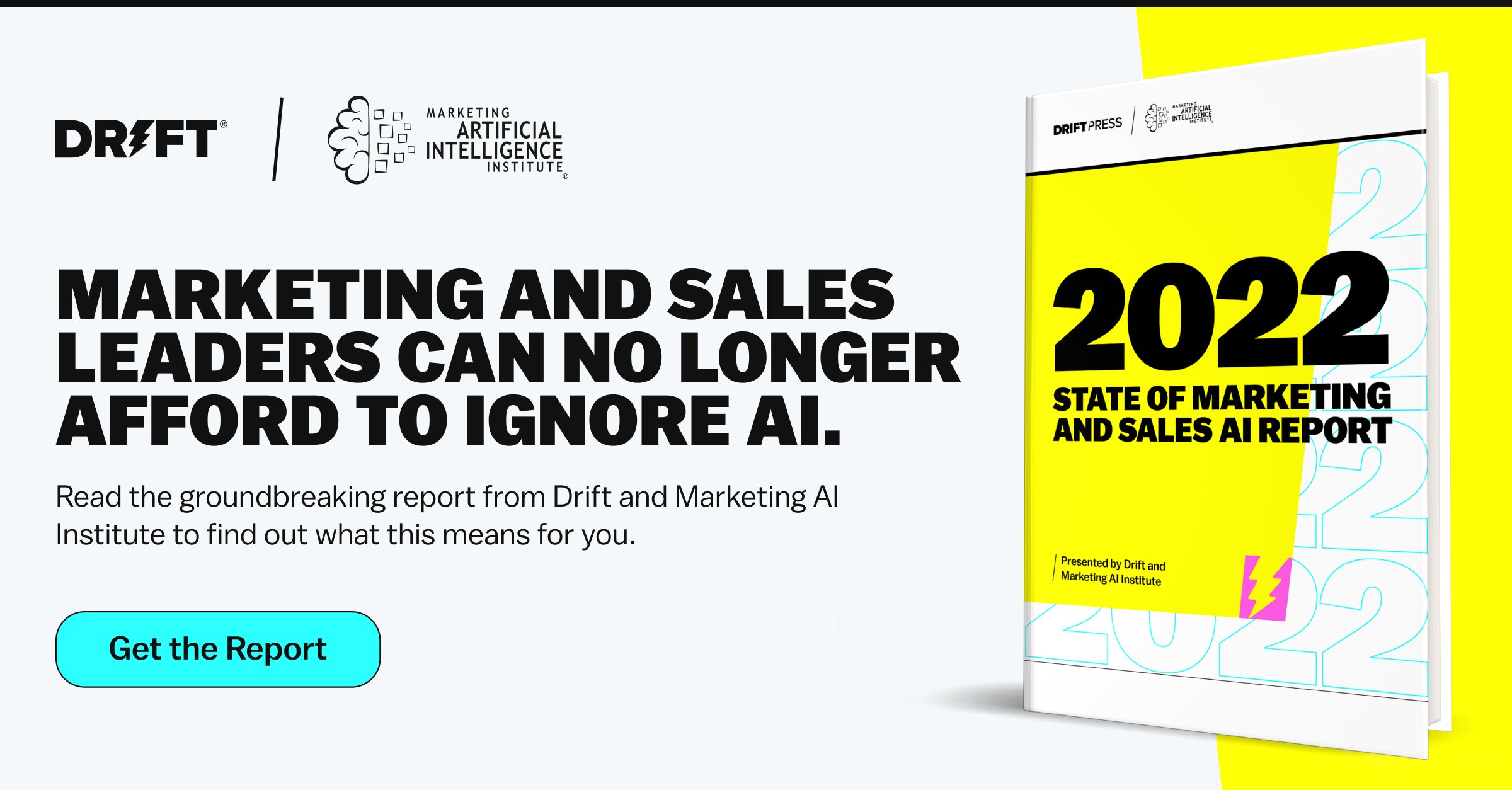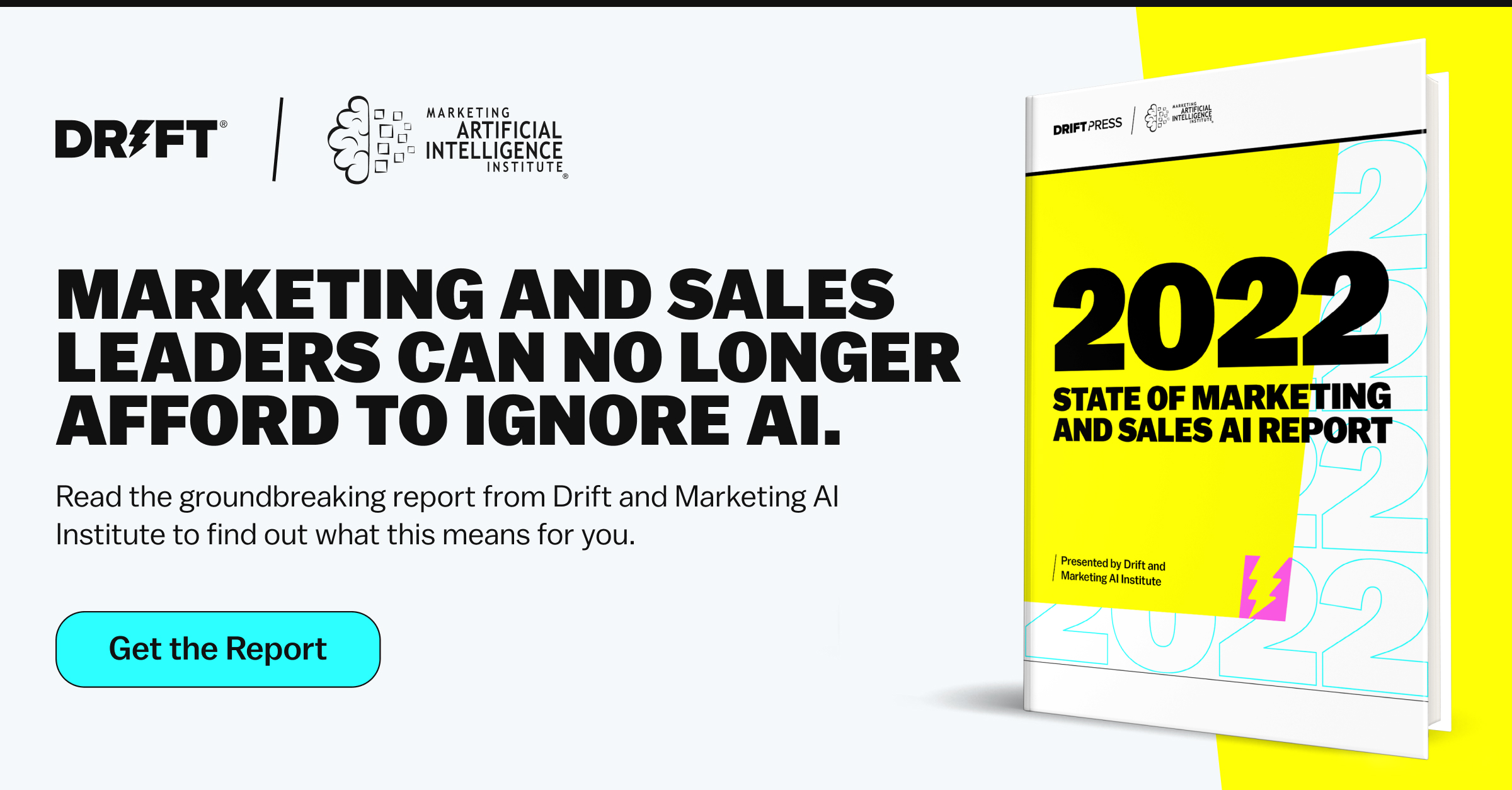There’s a lot of talk around how artificial intelligence (AI) will change marketer’s roles.
Here are just a few examples that have come up in conversation this week:
- Will GPT-3 (a new form of AI powering a new plethora of copywriting tools) someday replace copywriters and content writers? Who’s next?
- We’ve long advocated for the use of video in sales. AI video solutions are one of the more recent developments – it will be interesting to see how this kind of offering evolves and how the market receives it.
- And there are so many articles around AI and jobs (and most of them don’t tell you anything you don’t already know), but this one from Millie was really well done on “How to Robot-Proof Your Career.”
But here’s the thing – I firmly believe that AI’s capacity to be creative has been over-hyped.
After all, creative intelligence (made up of humans’ five quotients in emotion, intelligence, cultural, social, and power) will ALWAYS be difficult to replicate.
In this post, I’ll explore what marketing AI is, how it should be used, and what marketers should be doing with their time in 2022 and beyond. Because creative intelligence is the secret to great marketing – and humans are not optional.
What Marketing AI Really Is
Artificial intelligence is the simulation of human intelligence, in order to create a system that can make decisions for itself.
AI is being applied across all industries. McCormick uses AI to come up with unique spice blends. Tesla uses AI to create vehicles that can accelerate, steer, and brake based on real-time data about roadways and traffic. H&M uses AI to determine which products should be placed next to each other in their stores to increase transaction value.
In marketing, AI promises lots of different results:
- Revenue acceleration
- More personalized experiences
- Lower advertising costs
- Higher advertising ROI
- More accurate predictions of customers’ needs
But we’re not going to get these results if we’re trying to use AI for the wrong things.
“We are a long way from machines being truly creative. Humans have aesthetic judgement.”
The Jobs and Tasks Marketing AI Should (and Shouldn’t) Take On
According to the 2022 State of Marketing AI Report, 51% said that AI was “very” or “critically” important to the success of their marketing this year, and 33% said it was “somewhat” important.
Most interestingly, only 6% of marketers said it was not important at all, which means that the vast majority of marketers think that AI is critical to their success.
While AI is important, that doesn’t mean it should replace content creation done by human marketers, which is heavily reliant on a deep customer understanding.
In today’s world, a marketer should not be doing:
- Data entry
- Programming an email workflow
- Manually pulling data from different sources into a report
- Hunting for the most engaged leads
These are all things that a computer should do. What a computer shouldn’t do is completely take over things like content creation or customer interviews.
“What used to be ‘the future of work’ is quickly becoming the ‘now of work.’ Most jobs require basic tech fluency, which includes being comfortable working alongside say, robots and artificial intelligence. It’s about helping humans double down on what we do best, and allocating the tasks that machines do well to machines.”
The Only Three Things Your Marketing Team Should Ever Do
Today, a great marketer’s time should only be spent in a few ways:
- Talking to customers
- Partnering with sales, product, and customer success teams
- In creation mode (events, courses, design, content, videos, funnels, etc.)
All of these require creative intelligence.
Even if an AI-generated report gives you the top 20 questions brought up in sales calls, that doesn’t replace listening to a prospect describe what’s going on at their organization, what they’re challenged with. And then listening to another, and another.
Real human interaction offers deep empathy, the ability to put yourself in your customers’ shoes when creating content, and the chance to bounce ideas off of the people that matter most. Plus, it gives you a heightened sense of what will resonate.
Copywriting assistants still need to be massaged by a human. The AI copywriter might generate a list of ideas, and then the marketer picks the best ones. Or the AI offers an outline, and the marketer writes the rest. Or the AI takes a stab at a paragraph, and the content creator makes it shine.

It’s really important to note that the AI tool is not driving strategy, or coming up with the overarching theme from which to generate ideas.
The same goes with non-writing creative AI like video creation.
The AI might generate a slightly disturbing video of a talking “human” but it’s not making the business case for even creating the video, or approving the script, or making sure the video gets viewed by the right people.
How to Use AI to Buy More Time
According to the aforementioned 2022 State of Marketing AI Report, 77% of marketers say that AI is currently automating less than a quarter of their work. But 74% said that within five years, AI will be automating over a quarter of their work.

That’s optimistic, considering only 15% of marketers say that they are in the “scaling” phase of marketing AI transformation and 67% say that their current AI capabilities are “beginner.”
What this means is that we’re all on the brink of a big transformation. That may sound dramatic, but it’s true.
Think of it this way: AI is this thing that nearly every marketer wants to effectively utilize soon but most haven’t yet. We’re at an important turning point. As marketers implement more AI solutions, we get to decide how this affects our roles.
We get to make sure that we allocate more time to customer research and creativity. Don’t use AI to take over content. Use it to buy more time for customers and content.
You can do this by implementing the time-saving AI tools your team needs right now, such as proactive and conversational chatbots, personalized journey automation, and accurate recommendation engines to better upsell and cross-sell.
Key Takeaways
The secret to using marketing AI successfully? Remember that creative intelligence matters. It’s what allows you to appeal to customers, deepen your relationships, and stand out in often unemotional business spaces. Creative intelligence is and will continue to be a major differentiating factor among successful revenue-driving teams.
Marketers should get as close as possible to the customer and create content and experiences that truly address their desires and concerns. AI should help remove barriers in the way of these important projects, not try to take them over.
Focus on time-saving AI, and ignore hyped-up, creativity-sparing AI for at least the next few years.





